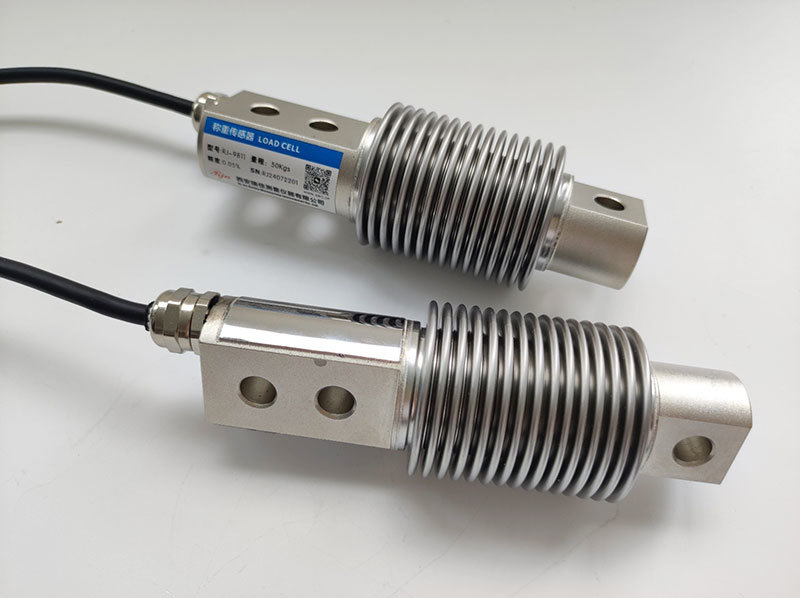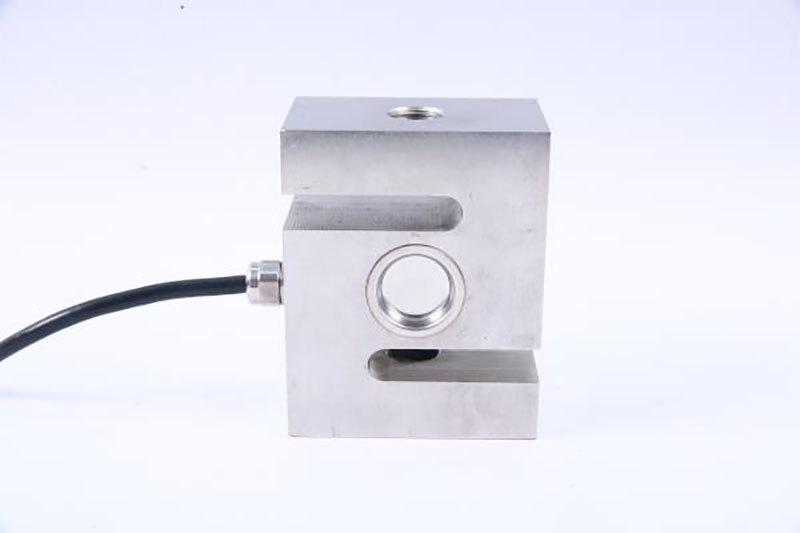21
2024
-
11
Explanation of weighing sensor parameters
author:
The difference in the sensor output signal when under rated load and when unloaded
The weighing sensor is an important component that converts pressure into electrical signals. When selecting a weighing sensor, there are many parameters to consider, which will be explained below.

1. Rated capacity: The upper limit of the weighing range provided by the manufacturer.
2. Sensitivity: The difference in the sensor's output signal when loaded with the rated load and when unloaded. Since the output signal of the weighing sensor is related to the applied excitation voltage, the rated output is expressed in mV/V and is referred to as sensitivity.
3. Sensitivity tolerance: The percentage difference between the actual stable output of the sensor and the corresponding nominal rated output.
4. Non-linearity: The maximum deviation between the actual measured curve of increasing load and the straight line determined by the output value at no load and the output value at rated load, expressed as a percentage of the rated output value.
5. Hysteresis tolerance: The maximum difference in output at the same load point when gradually loading to the rated load and then gradually unloading, expressed as a percentage of the rated output value.
6. Repeatability error: Under the same environmental conditions, repeatedly loading the sensor to the rated load and unloading it. The maximum difference in output values at the same load point during the loading process, expressed as a percentage of the rated output value.
7. Creep: The change in the output of the weighing sensor over time when the load remains constant and other test conditions are unchanged, expressed as a percentage of the rated output.
8. Zero output: The output value of the sensor when unloaded under the recommended voltage excitation, expressed as a percentage of the rated output.
9. Insulation resistance: The DC resistance value between the circuit and the elastic body of the sensor.
10. Input impedance: The impedance value measured at the power supply excitation input when the signal output terminal is open and the sensor is unloaded.

11. Output impedance: The impedance measured at the signal output terminal when the power supply excitation input is short-circuited and the sensor is unloaded.
12. Temperature compensation range: Within this temperature range, the rated output and zero balance of the sensor are tightly compensated, so they will not exceed the specified range.
13. Zero temperature effect: The change in zero balance caused by changes in ambient temperature, generally expressed as the percentage change in zero balance per 10K change in temperature relative to the rated output.
14. Rated output temperature effect: The change in rated output caused by changes in ambient temperature, generally expressed as the percentage change in rated output per 10K change in temperature relative to the rated output.
15. Operating temperature range: The sensor can be used within this temperature range without harmful changes to any performance parameters.
16. Weighing sensor output: The measurable value obtained by converting the measured mass through the weighing sensor.
17. Weighing sensor graduation value: The size of one part when the measurement range of the weighing sensor is divided equally.
18. Weighing sensor verification graduation value: The graduation value of the weighing sensor expressed in mass units used in weighing sensor testing for accuracy classification.
19. Minimum verification graduation value of the weighing sensor: The minimum verification graduation value that the measurement range of the weighing sensor can be divided into.
20. Minimum static load: The minimum mass that can be applied to the weighing sensor without exceeding the maximum allowable error.
21. Maximum weighing: The maximum mass that can be applied to the weighing sensor without exceeding the maximum allowable error.
22. Non-linearity: The deviation between the calibration curve of the weighing sensor and the theoretical straight line.

23. Hysteresis error: The maximum difference between the output readings of the weighing sensor when the same level of load is applied; one reading starts from the minimum static load, and the other reading starts from the maximum weighing.
24. Creep: The change in full load output of the weighing sensor over time when the load remains constant and all environmental conditions and other variables are unchanged.
25. Minimum static load output recovery value: The difference between the minimum static load output of the weighing sensor measured before and after the load is applied.
26. Repeatability error: The difference between the output readings of the weighing sensor obtained from several consecutive experiments under the same load and the same environmental conditions.
27. Temperature effect on minimum static load output: The change in minimum static load output caused by changes in ambient temperature.
28. Temperature effect on output sensitivity: The change in output sensitivity caused by changes in ambient temperature.
29. Weighing sensor measurement range: The range of measured mass values, where the measurement will not exceed the maximum allowable error.
30. Safety limit load: The maximum load that can be applied to the weighing sensor, at which point the sensor will not produce drift beyond the specified value in terms of performance characteristics.
31. Temperature and humidity effect on minimum static load output: The change in minimum static load output caused by changes in temperature and humidity.
32. Temperature and humidity effect on output sensitivity: The change in output sensitivity caused by changes in temperature and humidity.
33. Minimum load: The mass value that the force-generating device can achieve, closest to the minimum static load of the weighing sensor.
Sensor,Load

